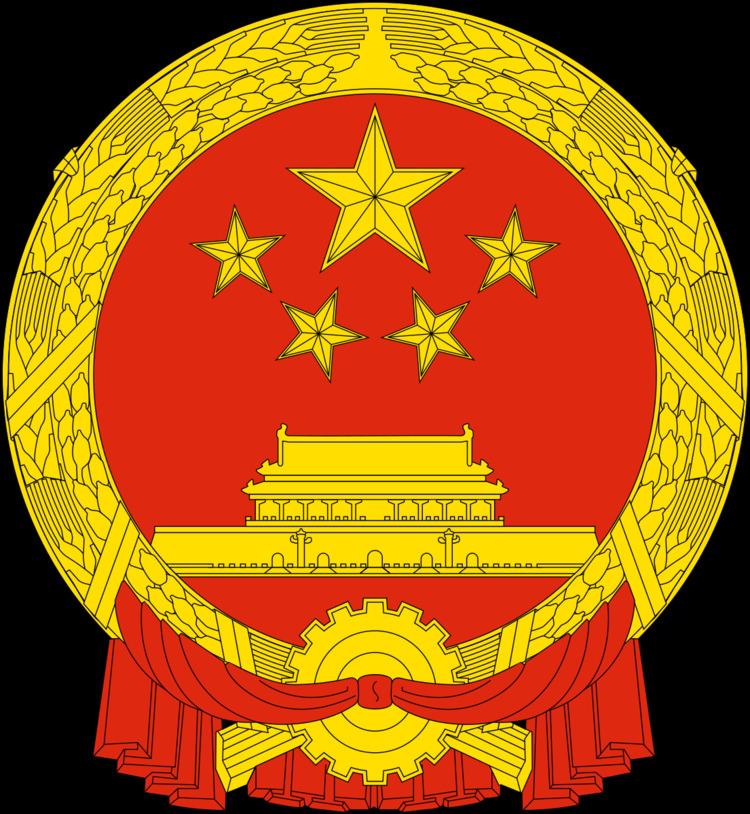Adopted 20 September 1950 | ||
 | ||
Escutcheon Red disc with a representation below of the Tiananmen, the entrance gate of the Forbidden City as seen from the Tiananmen Square in Beijing and five stars above. The outer border is composed of sheaves of wheat and the inner border of sheaves of rice, with a cog-wheel at the center of the bottom portion of the border. | ||
The National Emblem of the People's Republic of China contains in a red circle a representation of Tiananmen Gate, the entrance gate to the Forbidden City, where Mao declared the foundation of the People's Republic of China (PRC) in 1949. Above this representation are the five stars found on the national flag. The largest star represents the Communist Party of China, while the four smaller stars represent the four social classes as defined in Maoism. The emblem is described as being "composed of patterns of the national flag":
Contents
...The red color of the flag symbolizes revolution and the yellow color of the stars the golden brilliant rays radiating from the vast red land. The design of four smaller stars surrounding a bigger one signifies the unity of the Chinese people under the leadership of the Communist Party of China (CPC)
—China Yearbook 2004
The outer border of the red circle shows sheaves of wheat and the inner sheaves of rice, which together represent agricultural workers. At the center of the bottom portion of the border is a cog-wheel that represents industrial workers.
According to The Description of the National Emblem of the People's Republic of China (中華人民共和國國徽圖案說明), these elements taken together symbolise the revolutionary struggles of the Chinese people since the May Fourth Movement and the coalition of the proletariat which succeeded in founding the People's Republic of China.
History
On July 10, 1949 the government held a public competition for the design of the national emblem, however no satisfactory designs were selected. Therefore, on September 27, 1949, the First Plenary Session of CPPCC decided to invite designers for the proposals of the national emblem and two groups from two universities were selected in September 1949. Three proposals were selected for the first round discussion:
Members of the first CPPCC committee discussed these three proposals on June 10, 1950. The result of the discussion was, the China Central Academy of Fine Arts proposal was too colorful that would be regarded as trademarks, and proposal from Tsinghua University was regarded as bourgeoisie that contains many traditional symbols. The committee suggested two groups to include the Tian'anmen Gate, a symbol of Chinese revolution which is the location of May Fourth Movement and foundation ceremony of the People's Republic of China on October 1, 1949.
Two groups then worked on a second round proposals. The second proposal from Tsinghua University standardized the design of the Tian'anmen Gate on the emblem and selected red and yellow as the main colors. Their proposal was selected and the design was standardized and simplified by Gao Zhuang. This design was officially made the national emblem on 20 September 1950 by the Central People's Government.
Construction
National standard of China: GB 15093-2008 specifies the construction, material and color of the national emblem.
City Emblem and Special administrative region Emblem
In April 15, 1985, Taiyuan City officially announced its emblem, becoming the first city in the People's Republic of China to have a city emblem.
Hong Kong and Macao have each its own emblem. The National People's Congress have passed the standardized use of the two special administrative regions' emblems.
